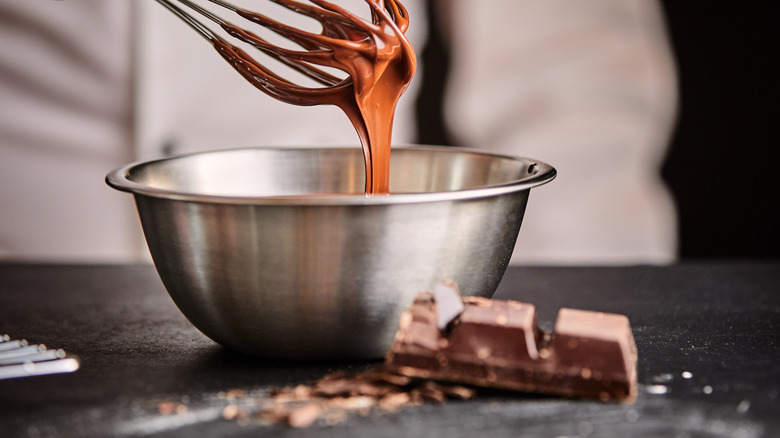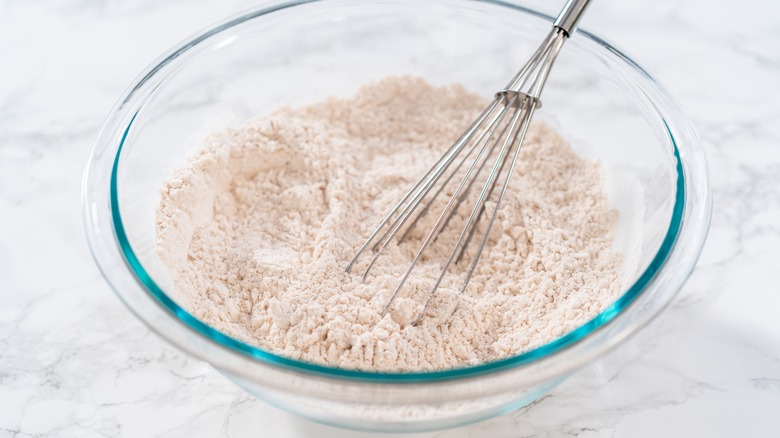The Best Mixing Bowl Material For Home And Professional Bakers
Set out to purchase a new mixing bowl, and you'll be inundated with a near-infinite range of options. With such a wide variety of shapes, sizes, and materials available, some shoppers may find themselves overwhelmed and unable to choose, while others assume that any old bowl will do. However, professional chefs and bakers agree that not all bowls are created equal. While the best size and shape may depend on your personal preferences and needs, some materials have clear advantages over others.
Every material has its downsides, but there's a general consensus among industry pros: Overall, stainless steel is best. Plastic can melt, and, like silicone, it's prone to picking up unpleasant odors. Glass cracks, and copper is pricy. Aluminum bowls are reactive, so they can give food an unpleasant metallic taste. Ceramic is often too heavy for practical use and chips easily.
Stainless steel is durable, inexpensive, and non-reactive. It's temperature safe, so you can use it as a double boiler or pop it in the dishwasher. Compared to ceramic and glass, it's lightweight and easy to lift, too. This means that you'll find a wider variety of sizes available: While it's easy to find stainless steel bowls that hold 8 quarts or more, glass bowls typically top out at around 4 quarts due to their weight. You can even use a stainless steel mixing bowl on the stovetop to pop popcorn.
Glass is a close second to steel — but comes with drawbacks
While professionals tend to eschew plastic, ceramic, and aluminum bowls, some prefer glass to stainless steel. Heatproof and nonreactive, glass shares many of stainless steel's biggest advantages and even outperforms stainless steel in some regards. However, glass comes with its share of disadvantages, too.
One of the main benefits of glass is that it's microwaveable. While some stainless steel bowls are advertised as safe for modern microwaves, they won't heat your food evenly and might mess up your microwave. The clear sides of glass bowls make it easy to check and see if your ingredients are thoroughly mixed, and they can double as serving dishes, too. Personal taste also plays a role. While the weight of glass is often seen as a disadvantage, some people prefer a little heft.
If you do opt for a glass bowl, look for tempered glass. Tempered glass is treated for extra strength, so it's more resilient to heat and less likely to break if you drop it on the floor. It is still susceptible to damage, though. Normal use, like accidental drops and bumps from the blades of a high-speed hand mixer, damages the glass on a microscopic level. Even if you can't see it with the naked eye, this wear and tear weakens the bowl and builds up over time. If a glass bowl sustains enough damage, it can spontaneously shatter — just another reason to stick to stainless steel.

